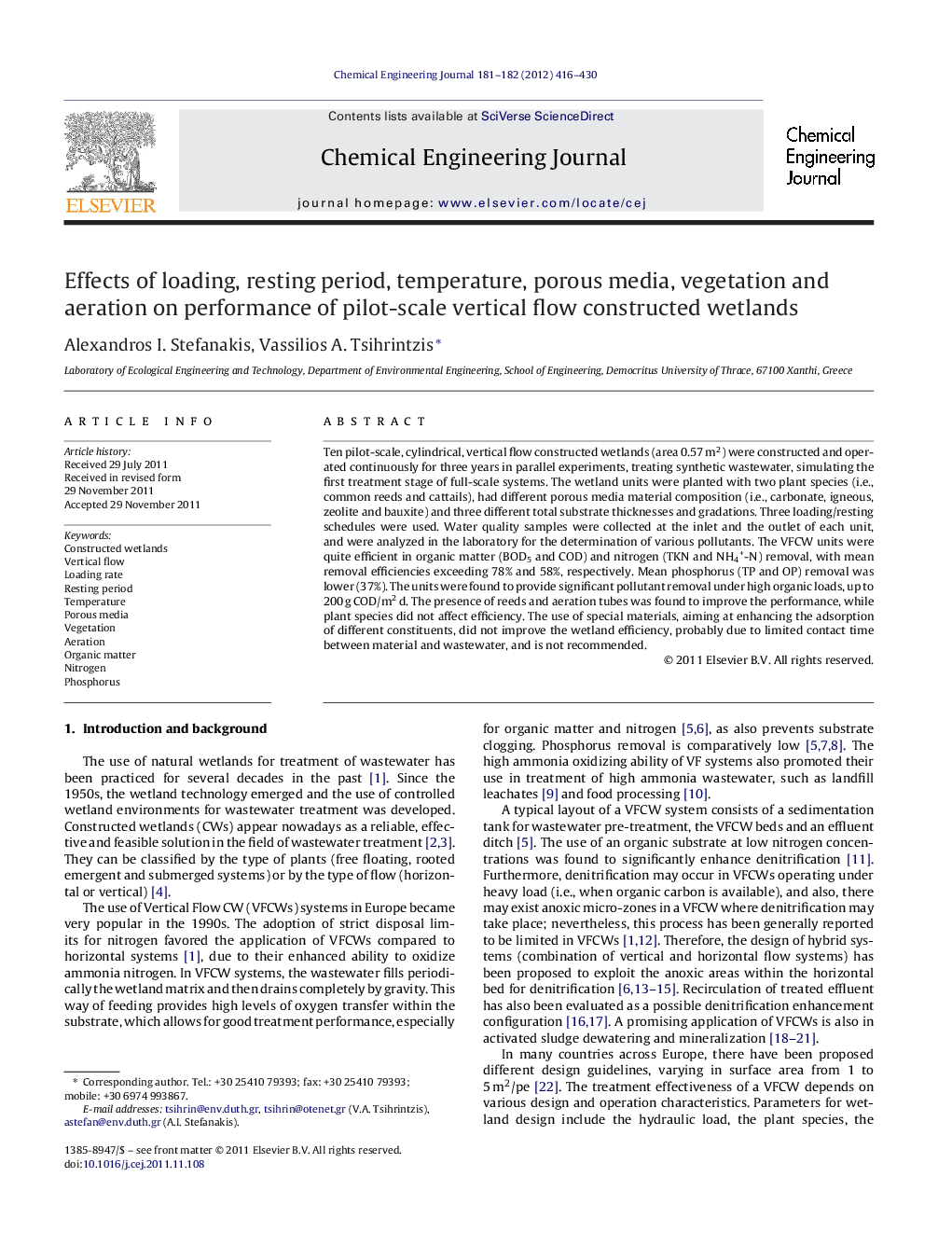| Article ID | Journal | Published Year | Pages | File Type |
|---|---|---|---|---|
| 150219 | Chemical Engineering Journal | 2012 | 15 Pages |
Ten pilot-scale, cylindrical, vertical flow constructed wetlands (area 0.57 m2) were constructed and operated continuously for three years in parallel experiments, treating synthetic wastewater, simulating the first treatment stage of full-scale systems. The wetland units were planted with two plant species (i.e., common reeds and cattails), had different porous media material composition (i.e., carbonate, igneous, zeolite and bauxite) and three different total substrate thicknesses and gradations. Three loading/resting schedules were used. Water quality samples were collected at the inlet and the outlet of each unit, and were analyzed in the laboratory for the determination of various pollutants. The VFCW units were quite efficient in organic matter (BOD5 and COD) and nitrogen (TKN and NH4+-N) removal, with mean removal efficiencies exceeding 78% and 58%, respectively. Mean phosphorus (TP and OP) removal was lower (37%). The units were found to provide significant pollutant removal under high organic loads, up to 200 g COD/m2 d. The presence of reeds and aeration tubes was found to improve the performance, while plant species did not affect efficiency. The use of special materials, aiming at enhancing the adsorption of different constituents, did not improve the wetland efficiency, probably due to limited contact time between material and wastewater, and is not recommended.
► Experiments in 10 pilot-scale vertical flow constructed wetlands. ► Quantification of pollutant removal. ► Effects of loading, plant, material, meteorological and other parameters. ► Optimization of VFCW design.
